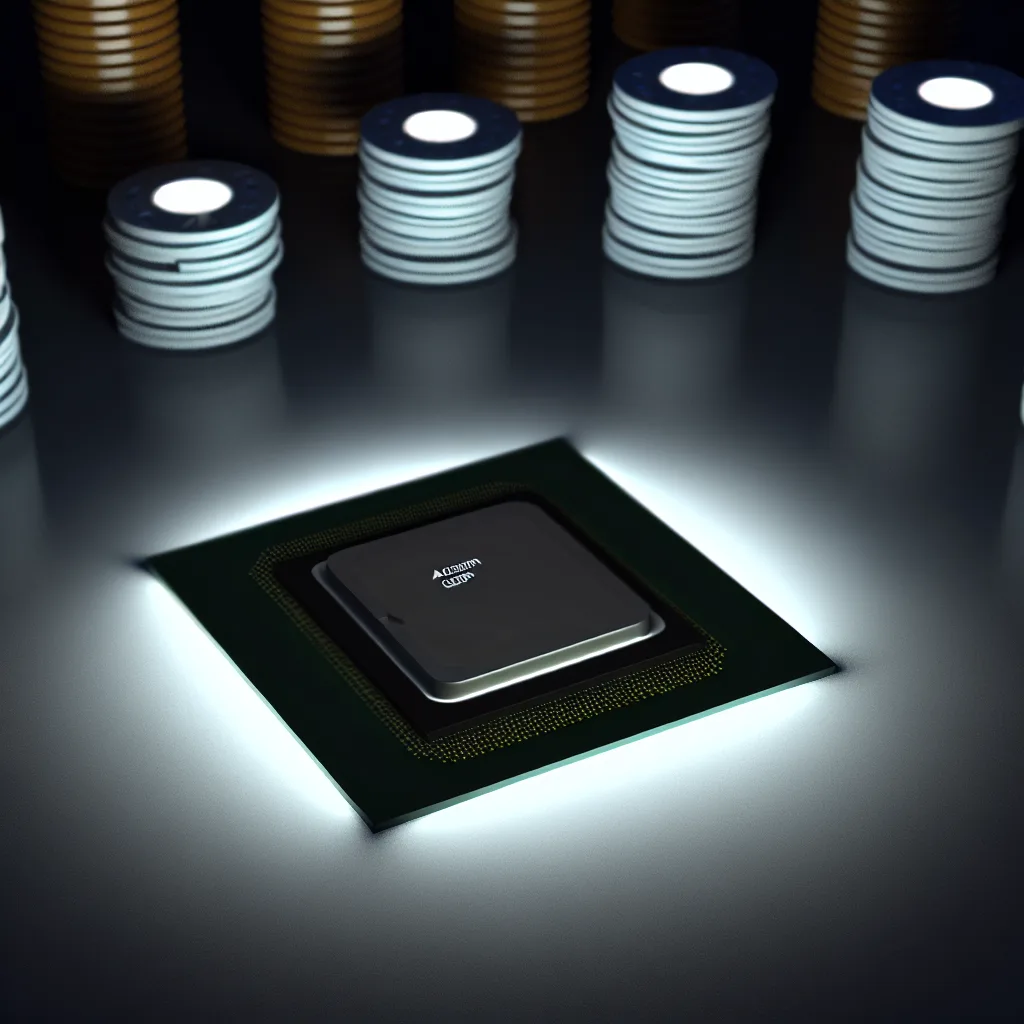AMD just made a $20 billion bet on the future of AI. It’s either brilliant or a sign of a bubble about to pop. Let’s break down the wild AMD OpenAI deal.
You hear about a big tech partnership and you think, “Okay, cool.” A chip company and an AI company team up. Standard stuff, right? That’s what I thought when I first saw the news about the AMD OpenAI deal. But when you start pulling on the threads, this story gets stranger and a lot more interesting. It’s a high-stakes poker game where the chips are entire companies, and I’m not sure everyone can cover their bets.
So, here’s the deal on the surface: AMD announced a major partnership with OpenAI. OpenAI, the company behind ChatGPT, agreed to buy a massive amount of AMD’s upcoming AI chips. Great news for AMD, which has been desperately trying to get a foothold in a market completely dominated by its rival, Nvidia. But then you get to the fine print, and that’s where it all goes sideways.
In exchange for this purchase commitment, AMD is giving OpenAI warrants for 160 million of its shares. That’s not a typo. At current prices, that’s roughly 10% of the entire company, worth something in the ballpark of $20 billion. Think about that for a second. AMD is giving a customer a tenth of its company just for the promise of buying its products. It’s like Ford giving Hertz 10% of its stock to get them to switch their rental fleet over. It just doesn’t happen.
Dissecting the Wild AMD OpenAI Deal
So why on earth would AMD make a move this drastic? It’s all about the AI gold rush. Right now, Nvidia owns the shovel store. They control an estimated 90% of the market for the powerful GPUs that train AI models like ChatGPT. For years, AMD has been on the outside looking in, a distant second place.
Landing OpenAI as a flagship customer is AMD’s all-or-nothing shot at relevance in the AI space. If the most important AI company in the world is using your chips, then everyone else will want them, too. It’s the ultimate seal of approval. The problem? The chips OpenAI has committed to buying—the Instinct MI450 series—don’t even exist yet. They aren’t scheduled to ship until 2026.
So, to recap: AMD is betting a tenth of its company on a product that isn’t finished, for a customer who hasn’t paid yet. That’s not just confidence; that’s a Vegas-level gamble.
What Does the Competition Think?
You can’t talk about this without bringing in the competition. When asked about the AMD OpenAI deal on CNBC, Nvidia’s CEO Jensen Huang’s reaction was telling. He said he was “surprised” that AMD would give away such a huge stake before the product was even built, followed by a slightly backhanded compliment: “it’s clever I guess.” Coming from your biggest rival, that’s the kind of comment that speaks volumes.
But Huang also dropped another bomb. When asked how OpenAI was planning to pay for its other massive, $100 billion deal with Nvidia, he casually admitted, “they don’t have the money yet.”
This pulls the curtain back on the whole arrangement. Neither AMD nor Nvidia seems to be dealing with a customer who can actually pay cash on delivery for these multi-billion dollar orders.
The AI Bubble and Its Circular Logic
This is where the story moves from a strange business deal to something that feels like a potential financial bubble. We’re seeing a pattern of what some analysts, like those at Bloomberg, are calling “circular funding.”
Here’s how it works:
1. A chipmaker (like Nvidia or AMD) invests in or gives equity to a hot AI company (like OpenAI).
2. The AI company, now flush with cash or stock, uses that value to place huge orders for chips from that same chipmaker.
3. The chipmaker’s stock soars because they just announced a massive sale, making their initial investment look brilliant.
Everyone’s numbers go up, and it looks like a boom. But is any real money changing hands? It’s a loop of funding that props everyone up, and it works great, right up until the moment it doesn’t. According to reports, OpenAI is projected to burn through over $100 billion by 2029. At some point, the cash has to come from actual profits, not just clever deals with suppliers.
Despite this, the market is eating it up. AMD’s stock shot up 35% in the week the deal was announced. For investors, the risk is worth the reward. The thinking seems to be that if OpenAI succeeds and becomes the foundation of the new AI-powered economy, owning their business is worth any price. For more details on the partnership, you can often find official statements on AMD’s investor relations page.
Maybe this is the new way business is done in the age of AI. Maybe it’s a brilliant strategy where everyone wins. Or maybe, just maybe, it’s a game of hot potato with billions of dollars, and everyone is just hoping the music doesn’t stop while they’re the one holding the bag. Either way, it’s one of the most fascinating business stories happening right now.
